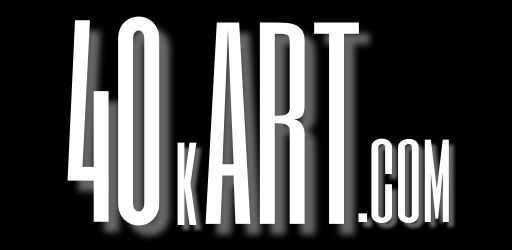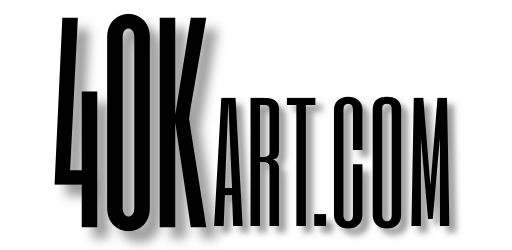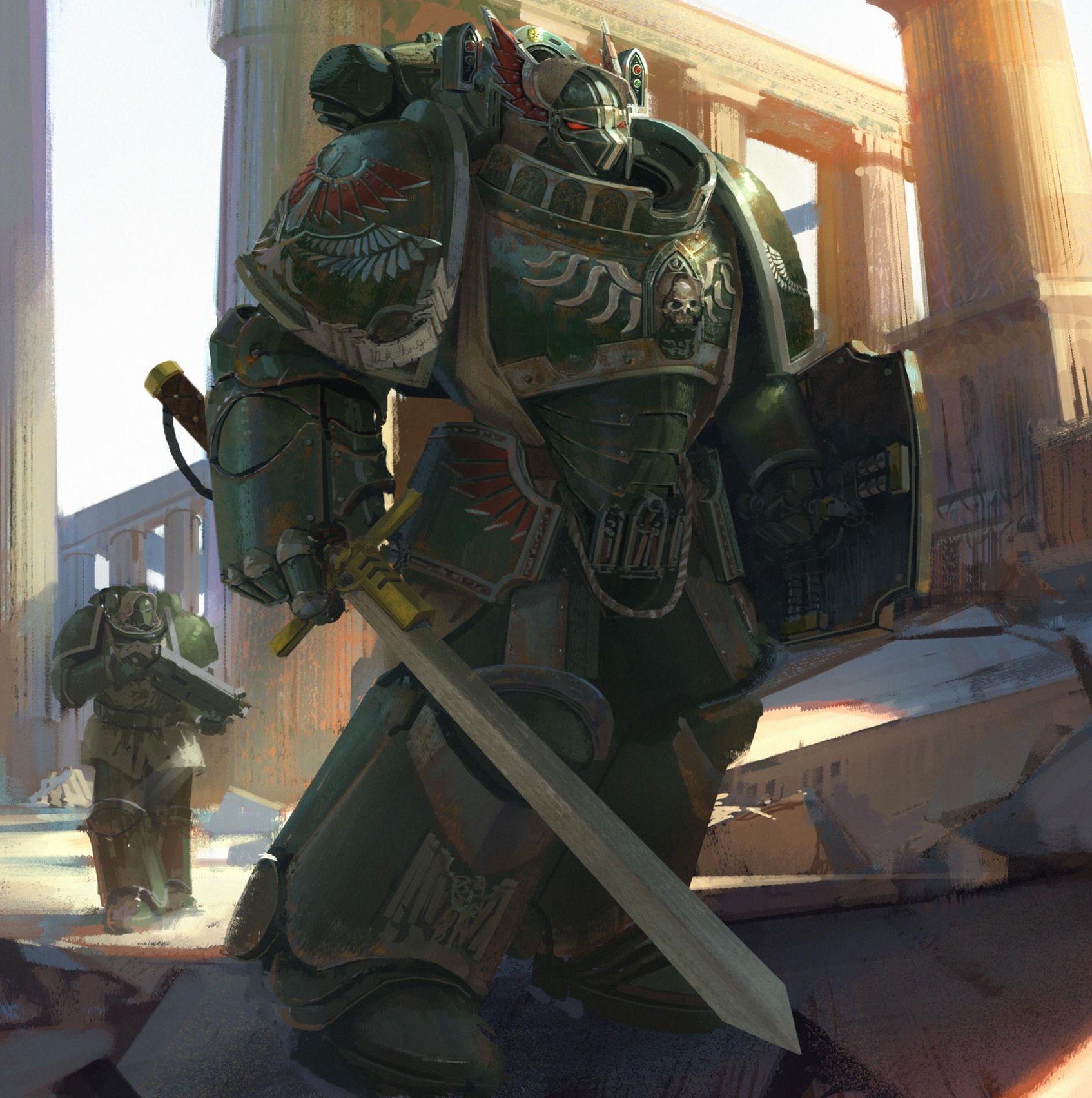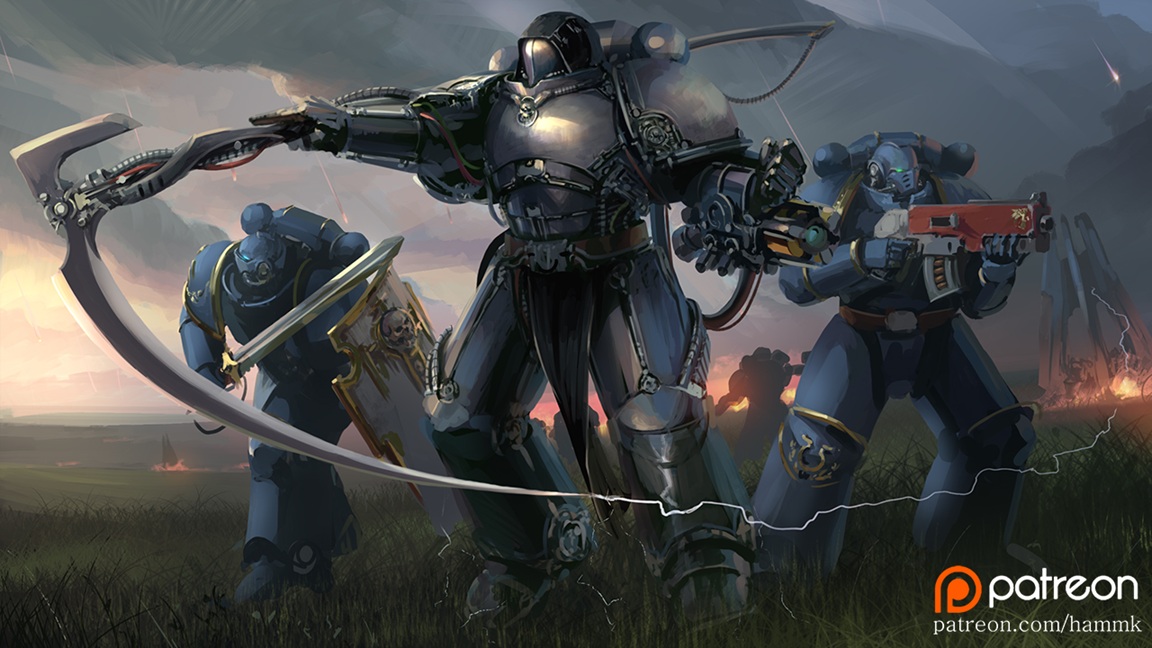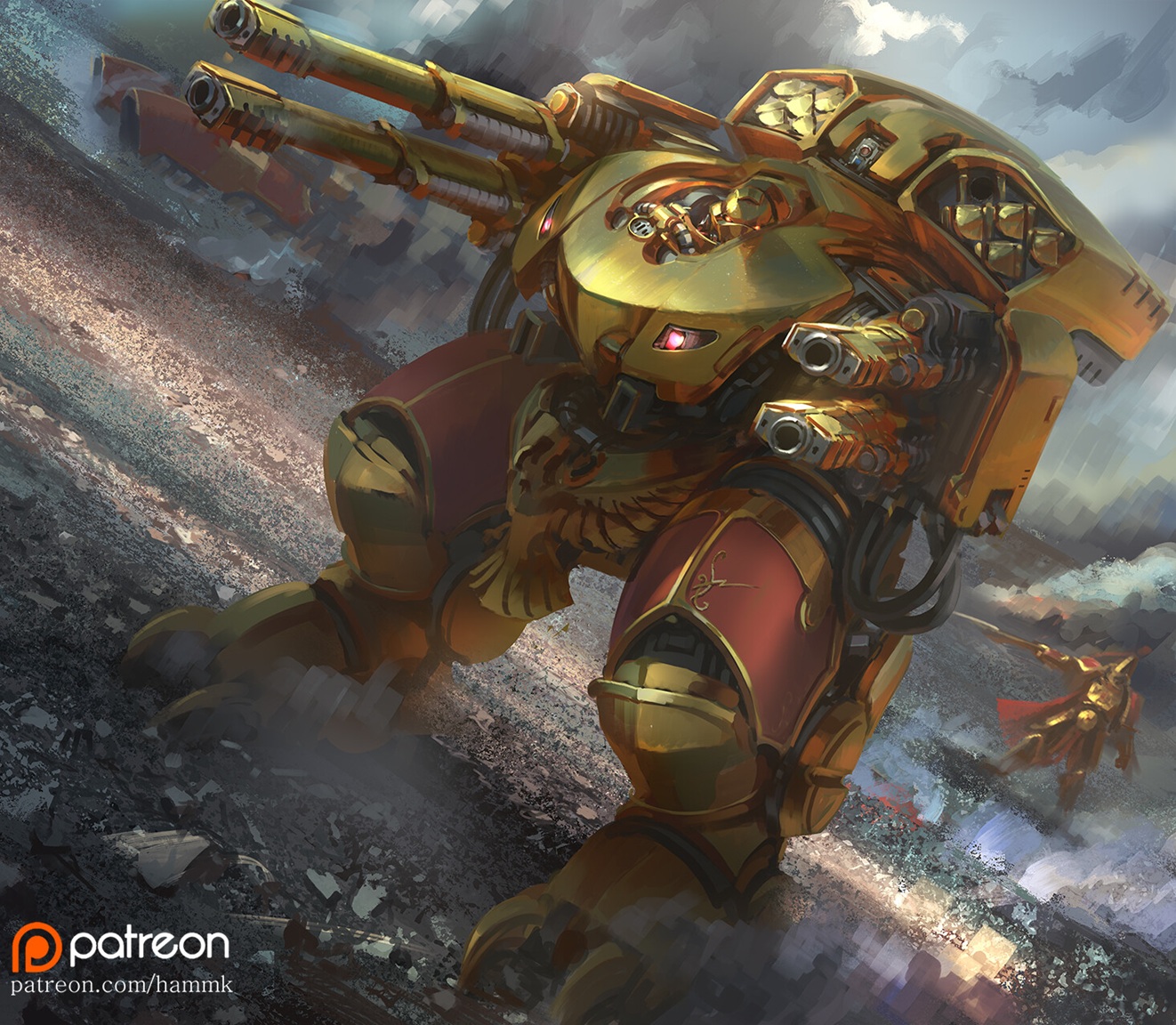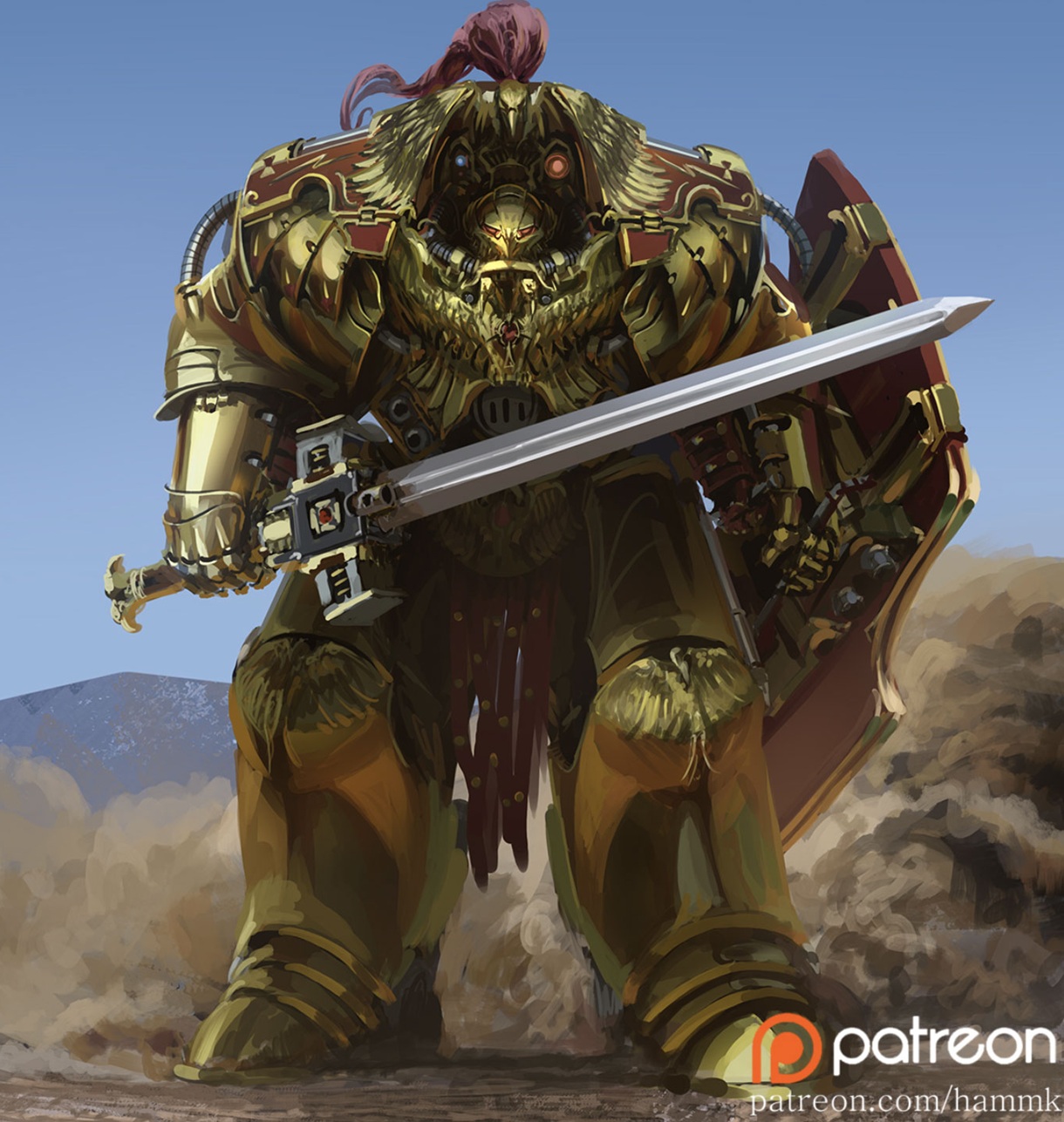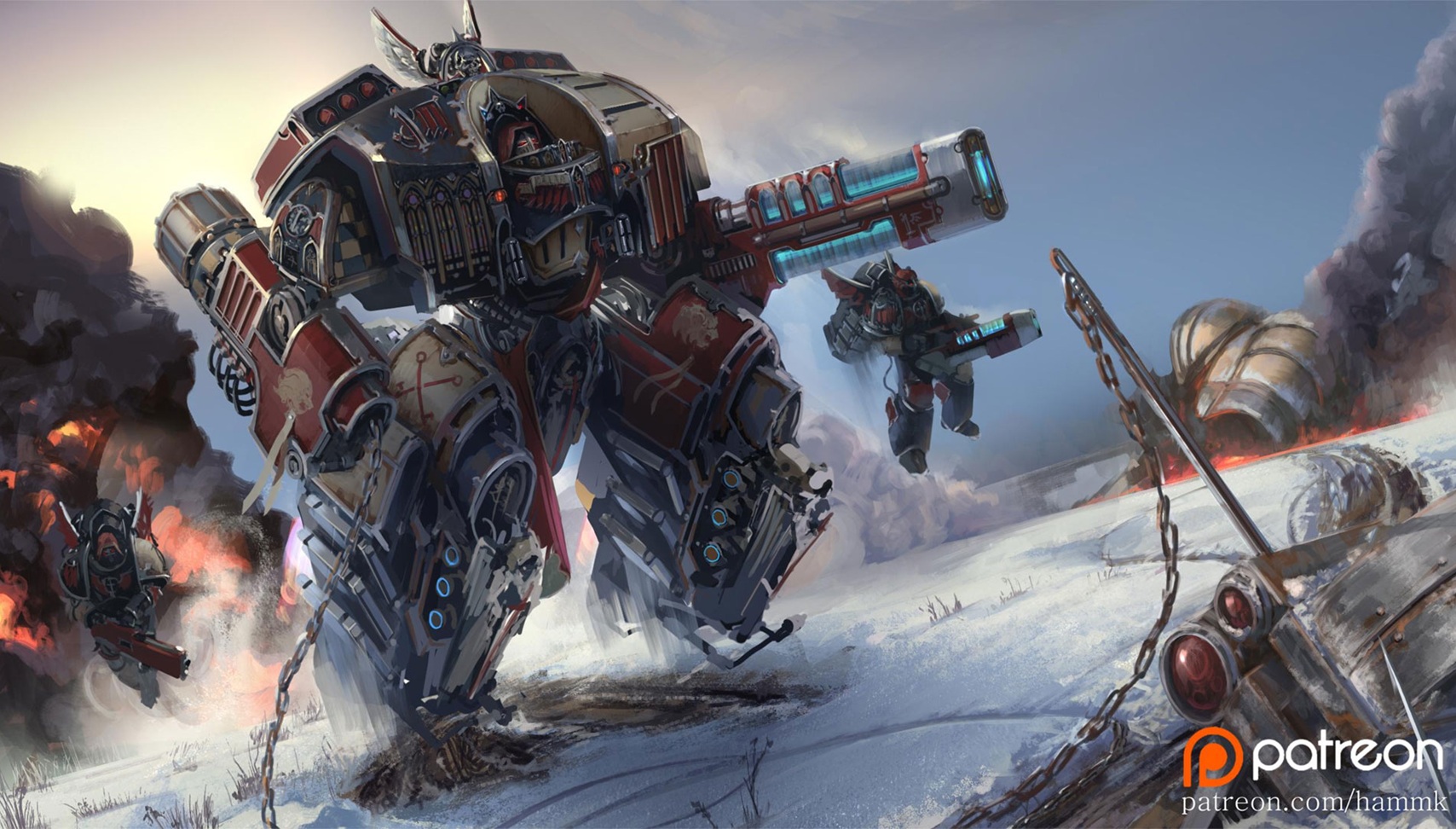
The March of the Iron Giant: Dreadnought’s Sacred Fury
The March of the Iron Giant
In this dynamic scene, a colossal Dreadnought dominates the battlefield, storming forward with an unstoppable gait across a snow-swept warzone. The towering war machine is painted in dark red and bone tones, with intricate chapel-like gothic details etched into its armored plating. On its right arm is a massive rotary cannon, while the left arm bears a glowing plasma weapon, both bristling with lethal energy. Smoke and fire billow in the background, indicating that this is a heated conflict already underway. Two Space Marines with jump packs flank the machine mid-air, highlighting the size of the Dreadnought as they appear minuscule by comparison. The whole composition radiates power, reverence, and the terrifying weight of technological fury.
Dreadnoughts: Warriors Beyond Death
Dreadnoughts in Warhammer 40,000 are more than just engines of war—they are the tombs of honored Space Marines who have fallen in battle but were too valuable to lose. When a warrior is mortally wounded, their body is interred within a Dreadnought sarcophagus, allowing them to fight on through the ages. These ancient warriors are revered by their Chapters, often serving as living relics, veterans of countless campaigns across millennia. Yet, their existence is bittersweet. They sleep in silence for years or even centuries between wars, only awoken when battle demands their wisdom and firepower. Their minds, slowed by the passage of time, are a mix of clarity and half-forgotten dreams, making their presence both sacred and slightly tragic.
Iconography and Symbolism
The Dreadnought in this artwork is covered in religious iconography and battle honors, from purity seals to winged skulls and chapter glyphs. These details aren’t just decoration—they speak to the Dreadnought’s identity, history, and the rites surrounding its activation. The architecture of its torso resembles stained glass windows or cathedral vaults, underscoring the quasi-religious role it plays within the Space Marine Chapter. The Marines leaping beside it wear similar red-and-white heraldry, likely denoting them as members of the Blood Angels or a successor Chapter. The scene evokes a sense of reverence, as if the Dreadnought is not merely fighting, but performing a sacred duty. Every bolt round it fires is a hymn of destruction sung in the Emperor’s name.
Ancient Sentinels of War
The lore of Dreadnoughts stretches back to the Great Crusade and Horus Heresy, where they were first deployed as mobile fortresses and symbols of resilience. Different Chapters maintain their Dreadnoughts differently—some, like the Space Wolves, treat them as honored brothers, while others, like the Iron Hands, see them as further steps toward perfect union with the Machine. Their armaments vary based on their roles: close-combat Dreadnoughts bear power fists and flame weapons, while ranged variants can devastate enemies from afar with plasma cannons, lascannons, or autocannons. Regardless of their type, all Dreadnoughts carry with them the memories and scars of long-forgotten wars. They serve as a living memory for their Chapter, embodying both ancient glory and the grim necessity of eternal battle. To face one in war is to stand before a fragment of history made metal and wrath.
Final Stand on the Frozen Battlefield
The setting of this image enhances the solemn majesty of the Dreadnought. Snow churns under its heavy tread, stained black with oil and red with blood as it advances over a ruined outpost. The sky is bleak, with distant fires reflecting the aftermath of orbital strikes or heavy bombardment. The angle of the artwork gives the machine a looming, almost divine posture, as though it were descending from the heavens with judgment in its guns. Chains trail behind, perhaps once used to bind the Dreadnought in transport, now dragging freely as it unleashes righteous fury. The scene captures the brutal elegance of Warhammer’s universe—where death is not the end, but merely the beginning of another war.
